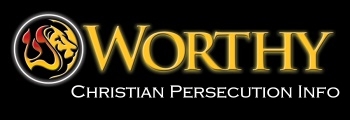By Stefan J. Bos, Chief International Correspondent Worthy News
(Worthy News) - The U.S. government has expressed concern after dozens of people were injured in clashes as the Serbian Orthodox Church in Montenegro installed its new leader.
Police used tear gas against protesters who threw rocks and bottles in the city of Cetinje, Montenegro’s old capital, where the ceremony underscored deep divisions in the tiny Balkan nation and NATO military alliance ally.
Hospital officials in Cetinje said at least 60 people were injured, including 30 police officers, in clashes that saw security forces firing gunshots into the air.
At least 15 people were reportedly detained.
Montenegro split with Serbia in 2006, but its church remains under the Serbian Orthodox church. Some, including Montenegro's president, see it as a symbol of Serb influence.
In a controversial move, President Milo Djukanovic had even urged protesters to disrupt the inauguration of Joanikije II to the top clerical position, known as the Metropolitan of Montenegro and Archbishop of Cetinje.
Ahead of Sunday’s clashes and ceremony, hundreds of protesters set up barricades with trash, bins, and large rocks to block access to Cetinje.
"We're on the barricades because we're fed up with Belgrade denying our nation and telling us what are our religious rights," protestor Andjela Ivanovic said in published remarks. “All religious objects [churches] built-in Montenegro belong to people here and the state of Montenegro."
Ad protests spread, Joanikije II and Serbian Patriarch Porfirije were flown in by helicopter for the ceremony.
Television footage showed priests being led into the Cetinje monastery for the ceremony by heavily armed riot police holding a bulletproof blanket to shield their bodies.
Patriarch Porfirije later wrote on social media that he was happy that the inauguration was held despite the worst religious riots in years. But he added in a statement that he was “horrified by the fact” that someone near the monastery wanted to prevent the ceremony “with a sniper rifle.” The claim could not be immediately independently verified.
Around 30 percent of Montenegro’s 620,000 people consider themselves Serb.
Metropolitan Joanikije said after the ceremony that “the divisions have been artificially created.” However, “we have done all in our power to help remove” the divisions, “but that will take a lot of time.”
Joanikije’s predecessor as church leader in Montenegro, Amfilohije, died in October after contracting COVID-19, officials said.
In Serbia, President Aleksandar Vucic, accused by the opposition in Montenegro of meddling in its internal affairs backed by Russia, congratulated Joanikije on his inauguration. He also praised the government for going ahead with the ceremony despite the clashes.
“Cetinje is a town where some 90 percent of the people are against the Serbian Orthodox Church, where there is hate towards everyone who is not Montenegrin,” Vucic stressed in Belgrade. “This is not a real hate. Its hate that is induced by certain politicians in Montenegro, so it was quite logical to expect what happened there.”
As tense calm returned Monday, the U.S. government urged all sides “to urgently de-escalate the situation.”
“Religious freedom and the freedom of expression, including to peacefully assemble, must be respected,” the U.S. Embassy said in a statement.
It came amid broader concerns about instability in Montenegro, where authorities led the country to independence from Serbia and defied Russia to join NATO in 2017. Montenegro also is seeking to become a European Union member.
